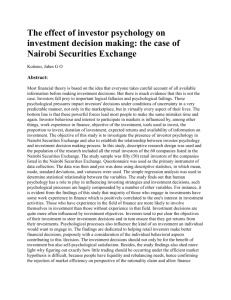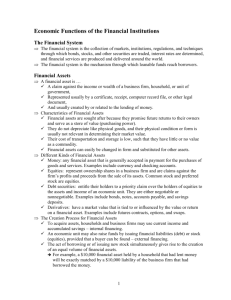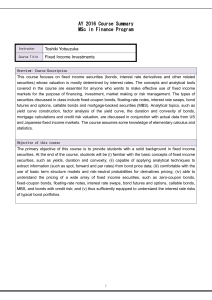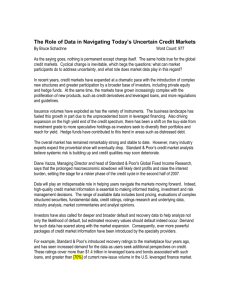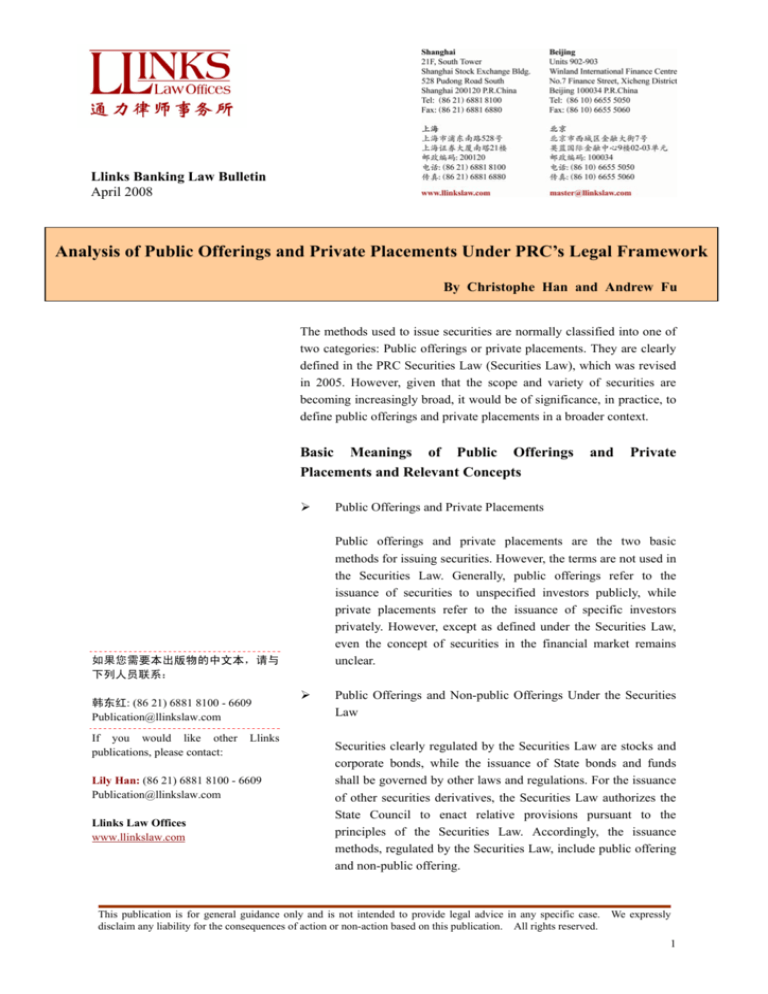
Llinks Banking Law Bulletin
April 2008
Analysis of Public Offerings and Private Placements Under PRC’s Legal Framework
By Christophe Han and Andrew Fu
The methods used to issue securities are normally classified into one of
two categories: Public offerings or private placements. They are clearly
defined in the PRC Securities Law (Securities Law), which was revised
in 2005. However, given that the scope and variety of securities are
becoming increasingly broad, it would be of significance, in practice, to
define public offerings and private placements in a broader context.
Basic Meanings of Public Offerings
Placements and Relevant Concepts
¾
If you would like other
publications, please contact:
Llinks
Lily Han: (86 21) 6881 8100 - 6609
Publication@llinkslaw.com
Llinks Law Offices
www.llinkslaw.com
Private
Public Offerings and Private Placements
Public offerings and private placements are the two basic
methods for issuing securities. However, the terms are not used in
the Securities Law. Generally, public offerings refer to the
issuance of securities to unspecified investors publicly, while
private placements refer to the issuance of specific investors
privately. However, except as defined under the Securities Law,
even the concept of securities in the financial market remains
unclear.
如果您需要本出版物的中文本,请与
下列人员联系:
韩东红: (86 21) 6881 8100 - 6609
Publication@llinkslaw.com
and
¾
Public Offerings and Non-public Offerings Under the Securities
Law
Securities clearly regulated by the Securities Law are stocks and
corporate bonds, while the issuance of State bonds and funds
shall be governed by other laws and regulations. For the issuance
of other securities derivatives, the Securities Law authorizes the
State Council to enact relative provisions pursuant to the
principles of the Securities Law. Accordingly, the issuance
methods, regulated by the Securities Law, include public offering
and non-public offering.
This publication is for general guidance only and is not intended to provide legal advice in any specific case. We expressly
disclaim any liability for the consequences of action or non-action based on this publication. All rights reserved.
1
Analysis of Public Offerings and Private Placements Under PRC’s Legal Framework
The Securities Law stipulates that it shall be deemed to be a public offering if any of the following
happens: Issuing securities to non-specific investors; issuing securities to targeted persons, who number
more than 200 in aggregation; or other issuances regulated by laws and administrative regulations. The
definition of public offering by the Securities Law is different from the definition under the Tentative
Measures for the Administration of the Issuance and Trading of Stocks promulgated by the State Council
in 1993. It can be concluded from the preceding provisions that non-public offerings in the Securities Law
are for targeted investors who number no more than 200. Meanwhile, it is clearly stated in the Securities
Law that any securities not issued in a public manner, “advertisement, public solicitation or public
issuance in any disguised form are not allowed.”
There are basic definitions under the Securities Law for public offering and private placement of
securities. However, it is silent on operational provisions of the non-public offering of securities. It only
provides that for the non-public offering of new stocks, a listed company shall meet the requirements
outlined by the securities regulatory body approved by the State Council, and that it shall report to the
securities regulatory body for verification and permission. However, no framework regulations have ever
been drafted by the Securities Law and CSRC (China Securities Regulatory Commission) with respect to
non-public offering of stocks and corporate bonds by non-listed companies. Considering the particularity
of listed companies (information disclosure), rules for non-public offering of stocks (introduction of
strategic investors by private placement) by listed companies may not make much sense for the
non-public offering of other securities.
¾
Offering to Specific Investors
The term “offering to specific investors” could be found in the Tentative Measures for the Administration
of the Issuance and Trading of Stocks, which was formulated by the State Council in 1993. Article 11 of
those measures sets out specific requirements for applying for public offering of shares by companies
established by offering to specific investors.
Companies established by offering to specific investors refer to those joint-stock companies that only
offer shares to legal persons and their employees — without offerings to public. The previous State
Commission of Economic System Reform once promulgated an official document regarding offerings to
internal employees, and it provides that holding of stocks by employees, by way of offering to specific
investors, shall not be implemented until it is approved by the local reform authority. Holding of stocks by
employees complies with some basic features of private placements (issuing to targeted investors in a
non-public manner), as the method earliest regulated in private placement of securities is a special private
placement under specific circumstances in the course of development of the economic system.
¾
Targeted Offering
Targeted offering is an issuance method opposite to public offering in the regulations and regulatory
documents promulgated by the commissions and ministries of the State Council. For instance, the
Tentative Measures for the Administration of Bonds of Securities Houses provides that bonds of the
securities houses may, as approved, be issued to public or to specific qualified investors.
This publication is for general guidance only and is not intended to provide legal advice in any specific case. We expressly
disclaim any liability for the consequences of action or non-action based on this publication. All rights reserved.
2
Analysis of Public Offerings and Private Placements Under PRC’s Legal Framework
Practice in Private Placements
There are no regulations with respect to private placements, but we can still find private placements, or concepts
and practices similar to them; for example, the issuance of bonds by securities houses, the promotion and
issuance of collective fund trust plans by trust companies, and financial bonds issued by banks.
¾
Targeted Offering of Bonds by Securities Houses
According to the Tentative Measures for the Administration of Bonds of Securities Houses, revised in
2004 by CSRC, securities houses may, as approved, issue bonds publicly to public or specific qualified
investors. The Measures provide that targeted offering of bonds can only be made to qualified investors.
The qualified investors refer, as defined in the Measures, to those lawfully established legal persons or
investment institutions with the capability to make independent judgment on securities investments and
take risks, and which can engage in investments of securities in accordance with relative regulations and
their articles of association with an amount of registered capital that exceeds RMB 10 million, or audited
net assets that value more than RMB 20 million.
¾
Collective Fund Trust
To a great extent, collective fund trust can also be deemed to be a fund-raising method that differs from
public offerings, and which is in line with the basic characteristics of private placements.
According to the present Measures for the Administration of Collective Fund Trust Plans of Trust
Companies, investors in a trust plan initiated by a trust company shall be qualified investors. The so-called
qualified investors refer to those who are able to identify, judge and bear risks of trust plans, including any
natural person, legal person or other lawfully established organization with a minimum fund amount of
RMB 1 million, or any individual or family with an amount of financial assets that exceeds RMB 1
million at the time of subscription, or any person with an amount of annual income that exceeds RMB
200,000 in the last three years, or the aggregate annual income of the wife and husband exceeds RMB
300,000 in the last three years. For the number of investors, there is no limitation on the number of
institutional investors, while the number of individual investors shall not be more than 50 (before said
Measures, limitation on the number of investors, both including individual and institutional investors,
could not exceed 200). Meanwhile, trust companies shall not make conduct marketing or entrust
non-financial institutions to conduct marketing when trust plans are promoted by trust companies.
¾
Financial Bonds
Targeted offerings can also be used for issuance of financial bonds and commercial banks’ subordinated
bonds. However, these two bonds are not corporate bonds under the Securities Law. Financial bonds are
securities issued at the national interbank bond market by China-based financial institutions, with
payment of principal and interest as agreed. Commercial banks’ subordinate bonds are bonds issued by
commercial banks at the national interbank bond market, and the payment order of principal and interest
is after other debts of commercial banks, but before equity capital of commercial banks.
This publication is for general guidance only and is not intended to provide legal advice in any specific case. We expressly
disclaim any liability for the consequences of action or non-action based on this publication. All rights reserved.
3
Analysis of Public Offerings and Private Placements Under PRC’s Legal Framework
Let’s take private placement of financial bonds as an example. According to the Measures for the
Administration of Financial Bonds Issuance at the National Interbank Bond Market, financial bonds are
issued on a targeted offering basis only to underwriters and sub-distributors. Underwriters refer to
qualified financial institutions that comply with PBOC (People’s Bank of China) requirements, while the
sub-distributors refer to such institutional investors as Chinese-funded banks, Chinese-funded commercial
insurance companies and rural credit cooperatives approved by PBOC. Insurance companies are among
the main investors of commercial banks’ subordinated debts.
¾
Private Fund
There is no clear legal definition for the term of private fund. Article 101 of the Fund Law provides that
the specific administrative measures for fund-management companies, and other institutions approved by
the State Council to engage in securities investment activities with funds raised from targeted investors, or
to accept property trust from targeted investors, shall be separately provided by the State Council pursuant
to the Fund Law. To the best of our knowledge, the State Council has not formulated relevant
administrations for the operation of private funds. Generally, a trust company will work with a specialist,
private fund-management company to raise private funds through the issuance of fund trust plans.
Conclusions
On the basis of the aforesaid analysis, we can review public offerings and private placements from the following
perspectives:
¾
Regulatory Bodies
Almost all of the products that are publicly offered are under CSRC’s supervision. However, private
placements are regulated by different regulatory bodies (mainly CSRC, CBRC and PBOC), based on
financial institutions and financial products involved, which lead to difficulties in the formation of
uniform regulations on private placements. Therefore, it is worth discussing the necessity and possibility
to form a unified set of regulations on private placements.
¾
Definition of Qualified Investors
Compared with the general public in public offerings, private placements face relatively sophisticated
investors. However, in terms of the different risks for different products, it is difficult to stipulate
requirements for qualified investors, or such requirements must be adjusted, subject to changes in the
market, as far as the requirements for qualified investors are concerned.
¾
Limitations on the Number of Investors
We can infer from the analysis that limitations on the number of investors are not an indispensable
prerequisite requirement for various private placements. However, the Securities Law clearly specifies the
limitation of 200 investors, and the limitation of 200 investors in the previous trust plans has been
changed to a maximum of 50 individual investors. To some extent, the size and effect of private
placements are limited by them, and some institutions have tried to avoid such limitations through
different methods.
This publication is for general guidance only and is not intended to provide legal advice in any specific case. We expressly
disclaim any liability for the consequences of action or non-action based on this publication. All rights reserved.
4
Analysis of Public Offerings and Private Placements Under PRC’s Legal Framework
¾
Methods of Promotion
Another main aspect in which private placements differ from public offerings is whether it is allowed to
make public promotional activities. However, it is uncertain how to define the promotional activities that
can be made in private placements in economic activities with a boom of various marketing (including
marketing via new media on the Internet); for instance, whether advertising is allowed.
¾
Requirements for Information Disclosure
The requirements for information disclosure on publicly offered products are clear and strict. However, it
is necessary for laws and regulations to formulate basic guidelines for the regulatory requirements for
information disclosure on privately placed products, and on consultations among the investors subject to
different situations.
Contact Details
If you would like to know more information about the subjects covered in this publication, please feel free to
contact the following people or your usual Llinks contact.
Charles Qin
Tel: (86 21) 6881 8100 - 6612
Charles.Qin@llinkslaw.com
(86 10) 6655 5020
Michael Mei
Tel: (86 21) 6881 8100 - 6639
Michael.Mei@llinkslaw.com
This article was first published in China Legal Review, January/February 2008.
This publication is for general guidance only and is not intended to provide legal advice in any specific case. We expressly
disclaim any liability for the consequences of action or non-action based on this publication. All rights reserved.
5

